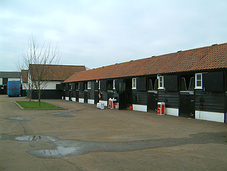The decision of the Upper Tribunal (Lands Chamber) in The Appeal of Wall and Wall (2020) UKUT 0166 (LC) concerned the procedure for appeals against, and applications for review of, decisions of the Valuation Tribunal for England (VTE).
The appellants were the occupiers of racing stables at Newmarket and appealed against the assessment of those stables appearing in the 2010 Rating List. After hearing that appeal, in 2012, the VTE determined that the assessment of the stables should be increased from rateable value £30,750 to rateable value £31,500 with effect from the date of the VTE’s decision. The appellant considered that the VTE’s decision to increase the assessment was based on an error in the valuation of timber loose boxes, and requested that the VTE review its decision.
As well as requesting that the VTE review its decision, the ratepayer made a new proposal against the rating list alteration resulting from the original VTE decision. This proposal was accepted by the Valuation Officer as a valid one, but it was made against an alteration to the rating list that was, itself, a decision of the VTE. When this later proposal was eventually listed for hearing by the VTE, in 2019, it became apparent that it was a proposal made against a VTE decision and that, the VTE had no means, other than by way of a review, to reconsider its own decisions. This later proposal was, therefore withdrawn.
After withdrawing this later proposal, the ratepayer made a further application for a review of the original VTE decision from 2012. That application for review was refused by the VTE on the grounds that the time limit for the making of such applications is 28 days from the date of the decision concerned, and the application was made more than seven years after the VTE decision. The review process could not be used to make a late challenge against a decision that had not been challenged by an appeal at the time.
The ratepayer appealed to the Upper Tribunal (Lands Chamber) against the VTE’s refusal to review its original decision. The Upper Tribunal concluded that the right of appeal to the Upper Tribunal exists only in respect of a decision or order of the VTE that is made on appeal to the VTE. It does not exist as a right of appeal against a decision or order of the VTE that is made in respect of an application for review. There was no right of appeal for the ratepayer against the VTE’s decision to refuse an application for review, and the ratepayer’s appeal therefore had to be dismissed.
As the matter was, strictly speaking, not an appeal to the Upper Tribunal, there was no power to remit it to the VTE for reconsideration. But the Upper Tribunal did note that the ratepayer’s original application for review, made in 2012, had never formally been determined by the VTE, and suggested that application should now be determined “on its merits”.
The decision is an important reminder to ratepayers, and their advisors, of two points of procedure. The first is that a refusal by the VTE.to review one of its decisions, is not, itself, a decision that can be subject to appeal to the Upper Tribunal. This means that, as a protective measure, any application for review of a VTE decision should also be accompanied by an appeal to the Upper Tribunal against the decision itself. The second important reminder is that the timescale for making an appeal to the Upper Tribunal, which is four weeks from the date of the VTE decision, is not delayed or suspended pending any application for review of the decision. If there are matters in a VTE decision that one or both of the parties consider should be subject to review, it is important that such a review is completed quickly, in less than four weeks, or that a protective appeal should be made to the Upper Tribunal, pending the outcome of a review by the VTE.

